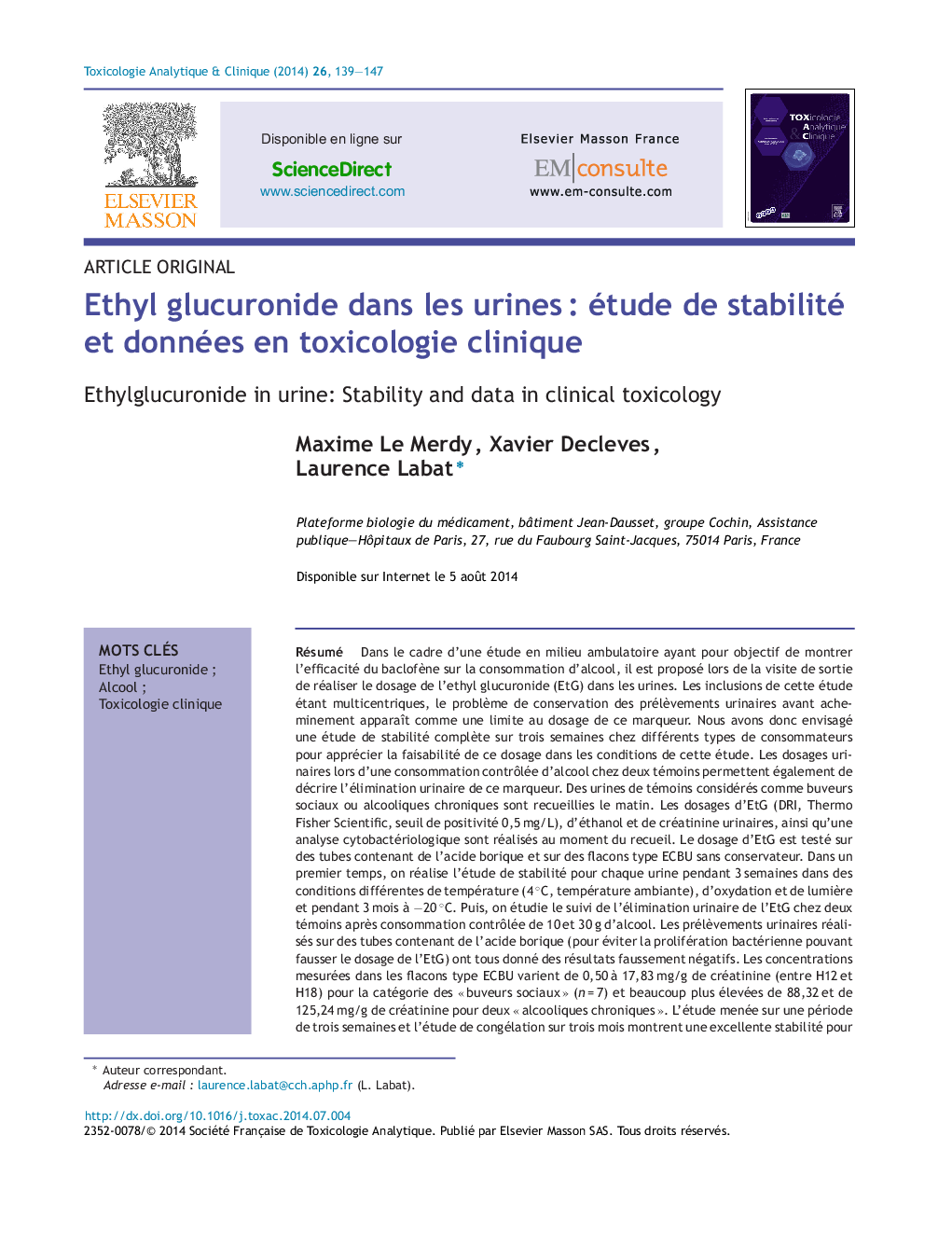| کد مقاله | کد نشریه | سال انتشار | مقاله انگلیسی | نسخه تمام متن |
|---|---|---|---|---|
| 107799 | 161821 | 2014 | 9 صفحه PDF | دانلود رایگان |
عنوان انگلیسی مقاله ISI
Ethyl glucuronide dans les urines : étude de stabilité et données en toxicologie clinique
دانلود مقاله + سفارش ترجمه
دانلود مقاله ISI انگلیسی
رایگان برای ایرانیان
کلمات کلیدی
موضوعات مرتبط
علوم پزشکی و سلامت
پزشکی و دندانپزشکی
پزشکی قانونی
پیش نمایش صفحه اول مقاله

چکیده انگلیسی
Within the framework of a study in ambulatory world to demonstrate baclofen efficacy on alcohol consumption, measurement of ethyl glucuronide (EtG) in urine was proposed at the study exit. For this multicenter study, transit of urine samples is necessary and we decided to study the stability of EtG in urine to simplify samples conveyance. EtG concentration was determined in a urine sample collected in the morning from subjects considered as social drinkers or chronic alcohol abusers, using the Thermo Fisher Scientific DRI EtG Enzyme Immuno Assay (cut-off 0.50 mg/L). For each sample, alcohol and creatinine were determined and cytobacteriological analyses were investigated. Measurement of EtG was performed using both special tubes with borate and classical flask. First, a stability study was achieved during three weeks at different temperature conditions (4 °C, ambient temperature), oxidative conditions and during 3 months at â20 °C. Secondly, we studied urinary elimination for two social drinkers for measured alcohol consumption. All the results obtained using tubes with borate (to avoid bacterial glucuronidases hydrolysing EtG) were false negative. Concentrations measured in classical flask were between 0.50 and 17.83 mg/g creat. (between H12 and H18) for social drinkers and between 88.32 and 125.24 mg/g creat. (n = 2) for chronic alcohol abusers. During three weeks, a satisfactory stability was achieved in all the conditions and at â20 °C for all the samples during three months (CV between 3.1% and 13.9%). For two subjects, urinary concentrations at various times were measured after consumption of 10 and 30 g alcohol. Estimated area under curves with kinetic elimination according to time, half lives (between 2.75 and 3.50 h) allow detection window determinations between 12.1 h for dose of 10 g and 30.1 h for dose of 30 g. Tubes with borate cannot be used. All the stability results show that no particular precautions are necessary in this ambulatory study. For LA02 and MA01, the saturation of the major oxidative pathway (ADH) can explain the differences between the two situations. For higher consumption subjects, conjugation of ethanol with activated glucuronic acid in the presence of uridine diphosphate (UDP) glucuronyl transferase, a minor detoxifying pathway (less than 0.05% of the dose of ethanol) seem to be excessively increased.
ناشر
Database: Elsevier - ScienceDirect (ساینس دایرکت)
Journal: Toxicologie Analytique et Clinique - Volume 26, Issue 3, September 2014, Pages 139-147
Journal: Toxicologie Analytique et Clinique - Volume 26, Issue 3, September 2014, Pages 139-147
نویسندگان
Maxime Le Merdy, Xavier Decleves, Laurence Labat,